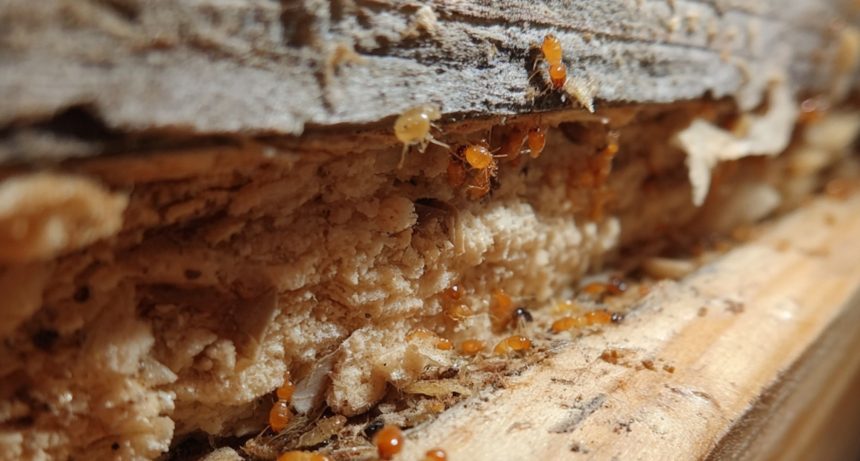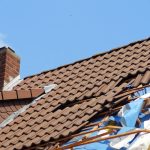A majority of the house owners are not aware of how a house can be destroyed within a short time by termites. Such pests will sometimes infest timber, floors, and even roof structures and, in the process, present drastic but slow destruction. What is so frightening is that the damage is normally done silently. Once the cracks are noticed or the ceiling begins to draw in, the infestation is at an advanced stage.
In the absence of Building and Pest Inspections, which should be done on time, residents of these houses frequently have to pay hefty sums of money to fix damaged structures or even a whole Roof Replacement. Professional inspection serves as the initial barrier of defence as it helps in identifying the presence of termites before it escalates into a huge issue.
How Termites Attack Your Home
Silent Damage Beneath the Surface
The termites subsist on cellulose, which is a natural constituent of timber and other wood materials. They also cause the beams, floors, and roof structures to weaken without leaving any trace since they eat the wood internally. A lot of the damage is carried out behind walls, the floor, or inside the roof cavities, thus it is hard to notice by the homeowner. In the long run, this silent devastation may affect the stability of a complete house.
Termite infestation is quickened by moist environments. Leaking pipes, lack of drainage, or wet soil by the side of a home give the ideal environment for colonies to grow and multiply. When the termites are set, they travel fast through subfloors, wall frames, and roof trusses. Without routine Building and Pest Inspections, these infestations often remain unnoticed until extensive repairs or even a full Roof Replacement are required.
Signs You Might Have Termite Damage
Structural Distortion and Unusual Cracks
Another telltale sign of termite infestation is structural distortion, which is also one of the most noticeable ones. Floors can begin to sink, ceilings can droop, and suddenly doors and windows have become hard to shut. When cracks start to appear in the walls or close to the door frame, it is possible that there is weak timber under the surface, implying that termites have already started eating away at the structure.
Mud Tubes and Hollow Timber
Termites tend to build mud tubes in foundations, skirting boards, or the walls of a place to move freely without any danger within their colony and food source. When you strike the wood when it is felt, it might ring hollow-a powerful indication of inward injury. Such passages and timbers that are hollow show that the termites are feeding on your property.
Frass, Dust, and Surface Damage
Fine wood dust or termite droppings (called frass) is also another important indication of an infestation. This can be found in furniture, skirting boards, or roof eaves. These signs are in addition to the peeling paint or broken plaster, which means that termites have already broken through the top surfaces and are gradually drilling their way through the inner timber.
Why DIY Detection Isn’t Enough
Hidden Infestations Beyond Reach
The activity of termites cannot always be seen. You are not likely to discover that type of colony that hides in the wall cavities, or under the floorboard, or in the innermost recesses of roof trusses, even with a flashlight inspection. DIY solutions do not have precision or the means to detect such hidden damages, thus it is important to have professional Building and Pest Inspections.
Delayed Identification Leads to Costly Repairs
Homeowners do not acquire this knowledge as to the rate at which termites can inflict severe structural damage. The infestation can take many months or even years to manifest itself by the time visible signs are exhibited. Homeowners suffer due to the lack of Building and Pest Inspections as they are left last to tend to the issue, and the major repairs, such as Roof Replacement, become inevitable.
Professional Tools Detect What Eyes Can’t See
The qualified inspectors monitor the presence of the termites through the use of various sophisticated devices like thermal imaging cameras, moisture measurement devices, and acoustic sensors, to ensure that the human eye is not able to detect them. Such technologies determine the precise point of infestations and facilitate the severity of the damages, and make a correct Termite Treatment and target prevention.
Professional Termite Treatment Solutions
Chemical and Physical Barriers
Liquid chemical barriers are commonly used to prevent the infiltration of termites around the perimeter of a property by professionals. These can also create a long protective barrier that kills or keeps off termites before they get to your house. In other instances, physical barriers are applied through stainless steel mesh arrangements or crushed granite to provide additional defense.
Baiting Systems for Colony Elimination
Another successful way of Termite Treatment is the use of baiting systems that are used to eliminate an entire colony. The bait is eaten by the termites and taken back to the nest, which slowly eradicates the place of infestation. This strategy is green and best suited to long-term control in cases of frequent inspections.
Continuous Monitoring and Follow-Up Care
Professional pest control does not end after one treatment. Professionals suggest continuous observation so that infestation does not recur. Follow-ups and re-inspections will ensure that your home is covered and protect you against the risk of causing massive damage or future costs, such as Roof Replacement.
The Role of Building and Pest Inspections
Comprehensive Coverage of All Risk Areas
Routine Building and Pest Inspections assess every vulnerable part of your home, including subfloors, roof voids, wall cavities, and external timbers. Inspectors check for moisture, wood decay, and pest activity that could indicate early signs of termite presence, providing you with a full picture of your property’s health.
Preventive Maintenance and Cost Savings
By detecting early termite activity, inspections allow homeowners to take preventative action before structural damage becomes severe. Addressing minor infestations early through proper Termite Treatment helps avoid major costs down the line, including timber restoration or complete Roof Replacement.
Professional Reporting for Future Planning
After each inspection, professionals provide a detailed report outlining the findings, including areas of concern and recommended treatment options. This information helps you plan ongoing maintenance, protect your investment, and ensure your property remains safe, strong, and termite-free for years to come.
Takeaway
Protect Your Home Before It’s Too Late
Termites are silent destroyers capable of compromising your home’s structure without visible signs. Regular Building and Pest Inspections, combined with professional Termite Treatment, are the best defence against these pests. Detecting and addressing termite activity early not only safeguards your property but also helps avoid expensive repairs like Roof Replacement.
Don’t wait until small issues become major repairs. Book a professional inspection today to safeguard your home’s structure, detect hidden damage early, and maintain your property’s long-term safety and value.
Frequently Asked Questions
1. How often should I schedule Building and Pest Inspections?
You should schedule Building and Pest Inspections annually, or every six months in termite-prone areas, to detect early damage and prevent costly Roof Replacement.
2. What are the early signs that I might need Termite Treatment?
Watch for hollow timber, wall cracks, sagging floors, mud tubes, or frass around skirting boards. These indicate termite activity requiring immediate Termite Treatment.
3. Can termites cause roof damage that leads to Roof Replacement?
Yes, termites can weaken roof beams and trusses, leading to severe structural damage. Delayed detection often results in expensive repairs or full Roof Replacement.
4. What’s the best way to protect my home from future termite infestations?
Schedule regular Building and Pest Inspections, fix leaks, maintain ventilation, and use professional Termite Treatment to safeguard your home against long-term termite damage.






